Thesis
Ever since the World Wide Web was first made public in April 1993, internet usage has seen consistent growth. It had an average growth rate of over seven percent between 2014 and 2024. There were 5.4 billion internet users as of April 2024, equating to 67.1% of the world’s population, with an expected 7.9 billion internet users by 2029. While the internet began as a series of interconnected servers and computers, it wasn’t until the advent of the web browser that mass consumption became a reality. In 1993, Mosaic launched as the first graphical web browser, spurring a series of browser wars vying to capture market share among early internet users.
As of 2024, a handful of browsers dominate the market. Chrome is by far the leader, growing from 62.3% market share in December 2018 to 65.4% market share in April 2024. The next most popular browsers as of April 2024 were Safari at 18% and Microsoft Edge at 5.3%, with no other browsers exceeding 5% — including Firefox (3%).
Despite over thirty years having elapsed since the launch of the first browser, the interaction, design, and user experience have remained relatively stagnant. While some users have expressed concern about the lack of privacy and performance issues on existing browsers, Chrome has high retention among its 3.5 billion users with its modularity and benefits from tight integration with the larger Google ecosystem. While newer entrants have attempted to disrupt the browser market, most have struggled to find widespread adoption.
Arc is the core product of The Browser Company which attempts to reinvent the browser experience, rethinking its core purpose, base primitives, and fundamental usage patterns. Its ambitions go beyond being an updated internet browser, as Arc wants to become “the web’s operating system” by creating an experience intended to reshape how users interact with the internet. As one product reviewer put it:
“Arc treats the web the way TikTok treats video: not as a fixed thing for you to consume but as a set of endlessly remixable components.”
Following its public launch in 2022, Arc benefited from its ability to leverage viral loops and gain exposure with its brand presence. Despite relative market stagnation in the browser market, Arc has found a growing number of ardent champions among influencers who have promoted the switch to Arc from legacy browsers.
Founding Story
Arc was launched by the Browser Company, which was founded in 2019 by co-founders Josh Miller (CEO) and Hursh Agrawal (CTO).
Miller’s first company, Branch Media, provided products including a conversation service and a link-sharing service. It was sold to Facebook as part of a talent acquisition for $15 million in January 2014. One year after this, at age 24, Miller left Facebook to become the White House’s first Director of Product. While there, he worked on projects including the first-ever government bot on Facebook which allowed citizens to message the President, and a civic engagement initiative with Kickstarter and Instacart.
While at the White House, Miller also worked closely with Thrive Capital founder Josh Kushner on ways to prevent recidivism for previously incarcerated inmates. As a political appointee, Miller didn’t have a clear next step after his tenure at the White House ended. At that time, Kushner invited Miller to work with him at his venture fund, Thrive Capital. After spending a year as an Entrepreneur in Residence, he joined the firm as a full-time investor.
As an investor, Miller found himself inspired by the creativity and originality of companies Thrive invested in like Airtable, Slack, GitHub, Notion, and Figma, which he felt constituted “fresh takes” on “categories of software that I thought were done and boring.” As Miller put it:
“All of a sudden I was getting the same tingle in your body that I got when I first used Snapchat or the iPhone from Notion… And I was just so inspired by all these pieces of software and they were all desktop-based primarily, and they all relied on the web browser… but no one was touching the web browser itself.”
According to Miller, this was the first moment the question occurred to him: “why isn’t someone taking that level of creativity and almost a consumer artistic lens to the web browser?” Miller attributes this as one among three different moments that led up to the idea for what would become Arc. The others included a conversation with his mentor he had while working for the Obama administration and the third and final moment was during a walk in Switzerland when he:
“…made the connection between, wait a minute, if all of the applications and files that we rely on are now in the web browser and then going to be even more in the web browser in the future, then the web browser starts to look more like an operating system or a platform.”
After this, Miller called on his former co-founder and CTO Hursh Agrawal to found what would become The Browser Company. The pair spent much of 2019 defining the product and hiring a founding team. As the idea took fruition and they narrowed the scope on the consumer market, Miller felt increasing excitement and conviction towards the problem. Just two weeks before the COVID-19 lockdowns began in 2020, Miller left Thrive to work on the company full-time.
Since its inception, the company has attracted notable industry talent, including a former engineering lead from Google Chrome, design leads from Tesla and Medium, and other experienced operators. The company raised its first round of funding, a, $5 million seed round, in 2020. Notable early investors included LinkedIn CEO Jeff Weiner, Figma CEO Dylan Field, Notion co-founder Akshay Kothari, and GitHub CTO Jason Warner. In 2022, The Browser Company released its first iteration of the Arc browser for general availability. Miller summarized his vision for the product as follows:
“I think of Chrome and Safari as Toyotas or Hondas. They’re reliable, they’re affordable, they’re accessible and they’re simple. We’re trying to build the Tesla of web browsers.”
Product
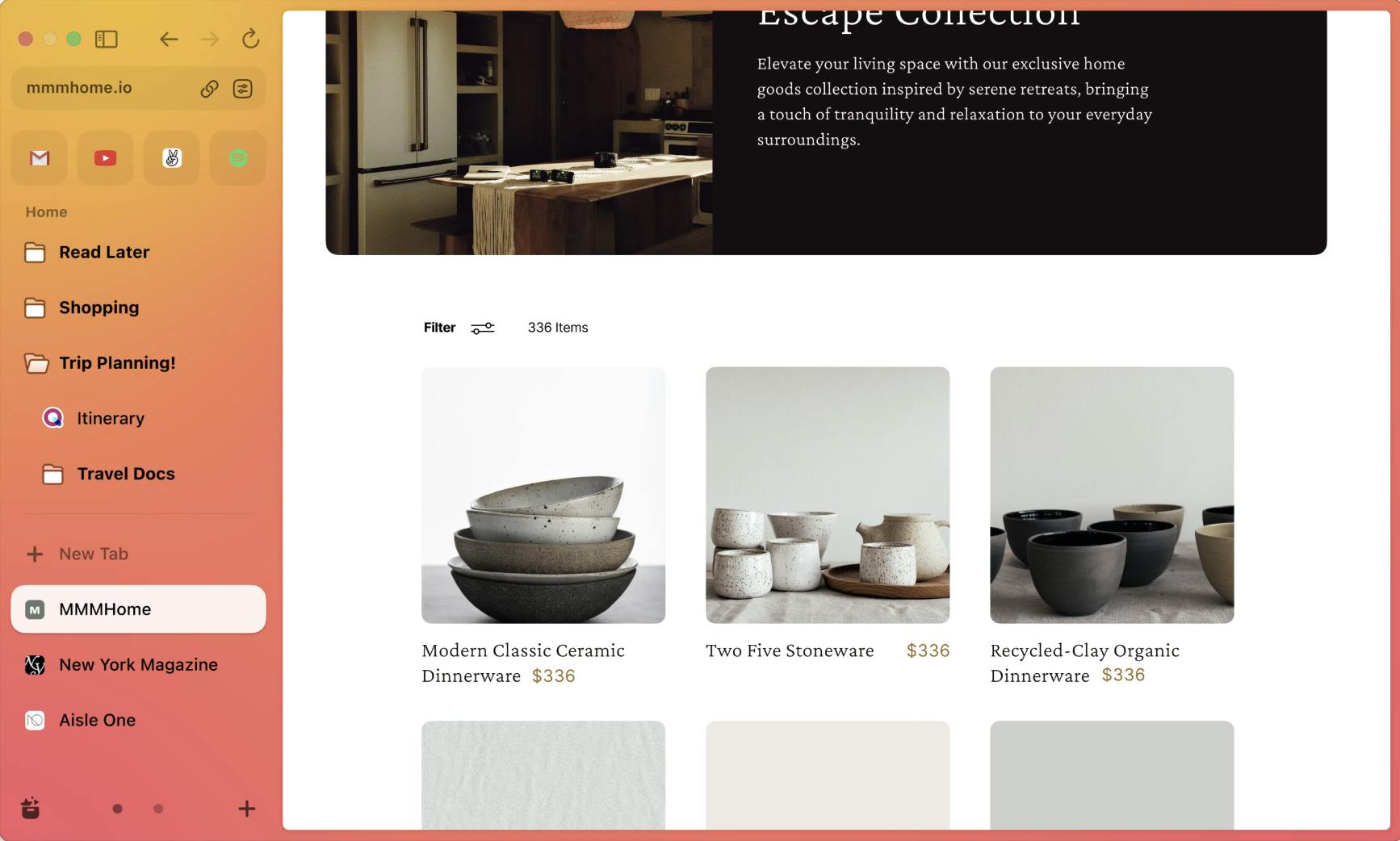
Source: Arc
Arc is an attempt to reimagine the web browser. Its minimalist interface is intended to promote simplicity and ease of use, while its customization options allow users to tailor their browsing experience to their preferences. It’s built on Chromium, the same open-source library as Google Chrome, yet distinguishes itself by its unique use of common web primitives.
As of May 2024, Arc is available on Mac, Windows 11, and iOS. Arc wants to be the web’s operating system. To that end, it developed tools that “make it easier to control apps and content” and “turned tabs and bookmarks into something more like an app launcher”.
Organize

Source: Arc
Arc has invested in its own unique organizational patterns to reduce tab and information overload.
Spaces: Spaces are distinct browsing areas in Arc, created to separate contexts. Tabs, files, themes, and icons are isolated across spaces, making the separation of projects and areas of life more seamless. Spaces can be shared with friends and colleagues
Profiles: Profiles allow separate scoping of logins, cookies, browsing history, and archive timing. Profiles are primarily used to separate work and personal browsing sessions and data.
Library: The Arc Library stores all the stuff the user has visited, downloaded, created or saved on Arc. These include media (images, videos, screenshots), downloads, Easels, Spaces, and archived tabs.
Tabs: Tabs live in the Arc Sidebar, which contains all tabs within a space, as well as the URL bar and library access. Arc released features to support tab management, including pinned tabs for persistence across sessions, auto-archiving of unpinned tabs on a configurable cadence, and folders for keeping relevant tabs and links together.
Create
Arc has also released certain features to aid user customization and modularization of the browser experience.
Developer Mode: Developer mode is a mode for the user tab that allows developer shortcuts and simple access to common developer browser tools. This includes a Portrait Mode for quick capture of the screen, as well as built-in Chrome developer tools.
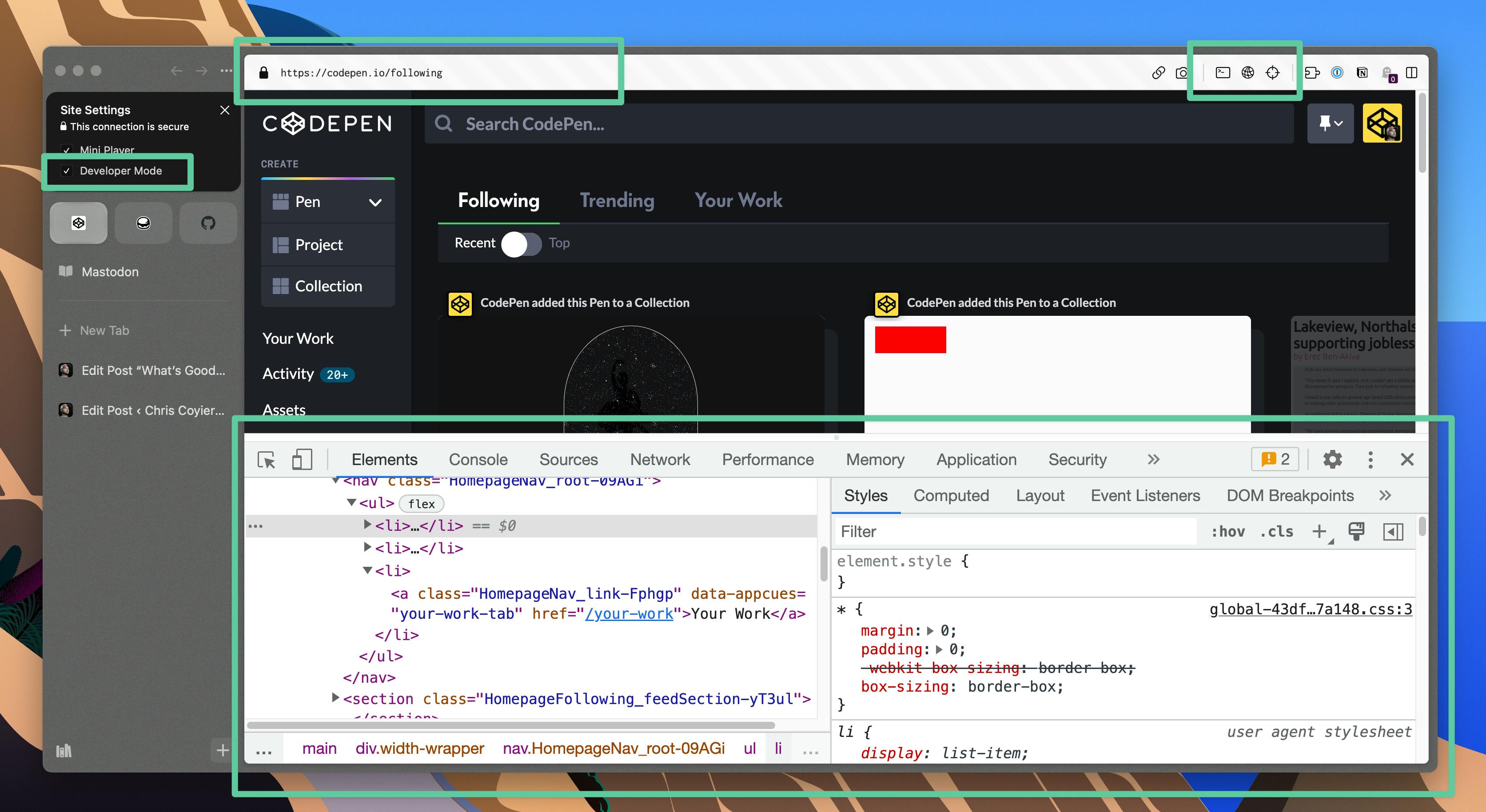
Source: Chris Coyier
Easels: Arc’s Easels are visual whiteboards that enable drawing, writing, and uploading images via Arc’s browser. They’re primarily intended to be used for quick idea capture and sharing.
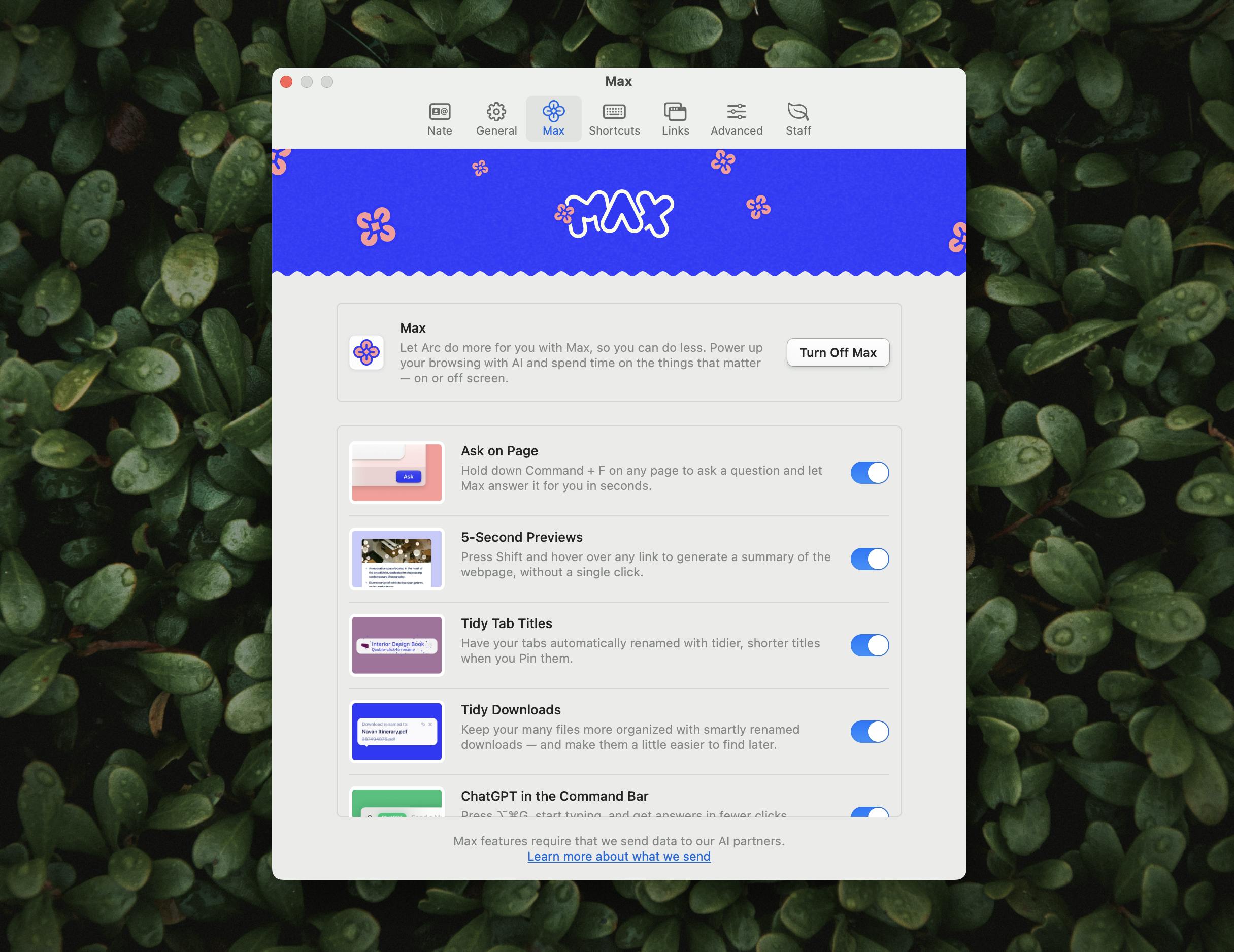
Source: GHacks
Boosts: Boosts are a way to edit and remix the browsing experience. Boosts allow users to configure individual webpage colors, enable dark mode, set custom fonts and text sizes, remove areas of a website, customize sites via code, and share saved Boosts. Arc also maintains a Boost Gallery with creative remixes of common websites.
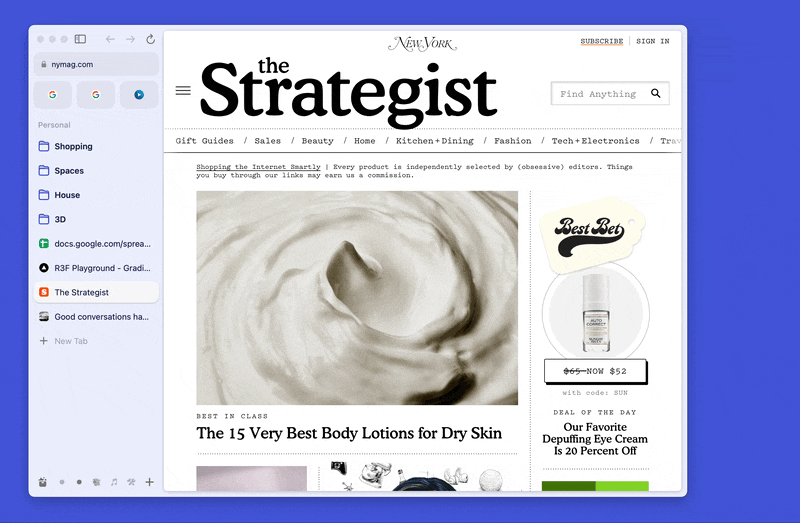
Source: Arc
Multitask
Split View: Split View allows for view and interaction with multiple tabs simultaneously in one window.

Source: Medium
Peek: Peek allows users to preview links without leaving the tab they are browsing and having to create a new tab.
Previews: Previews allow glancing at and taking common actions on top sites without leaving the current tabs. Such sites include Gmail, Google Calendar, GitHub, Notion, Confluence, Figma, and Linear.
Little Arc: Little arc is a mini window that opens when clicking a link from another desktop app. Links can also be moved to the sidebar.

Source: Arc
Mini Player: Arc’s Mini Player allows users to listen to audio or watch videos while browsing separate tabs.
Rev Up
Arc has built a series of features alongside AI to augment and assist common operations.
Site Search: Arc’s Site Search offering allows users to search websites directly within Arc’s Command Bar.
Arc Max: Arc Max boosts the browsing experience via a bundle of AI-powered features. Ask on Page allows for querying the page with natural language for a quick summary. Tidy Tabs and Tidy Downloads rename existing tabs and downloads to keep them organized and make them easier to find. 5-Second Previews provide instant summaries of websites when hovered over certain websites. Instant Links automatically opens the top result for any web search.

Source: Arc
Mobile
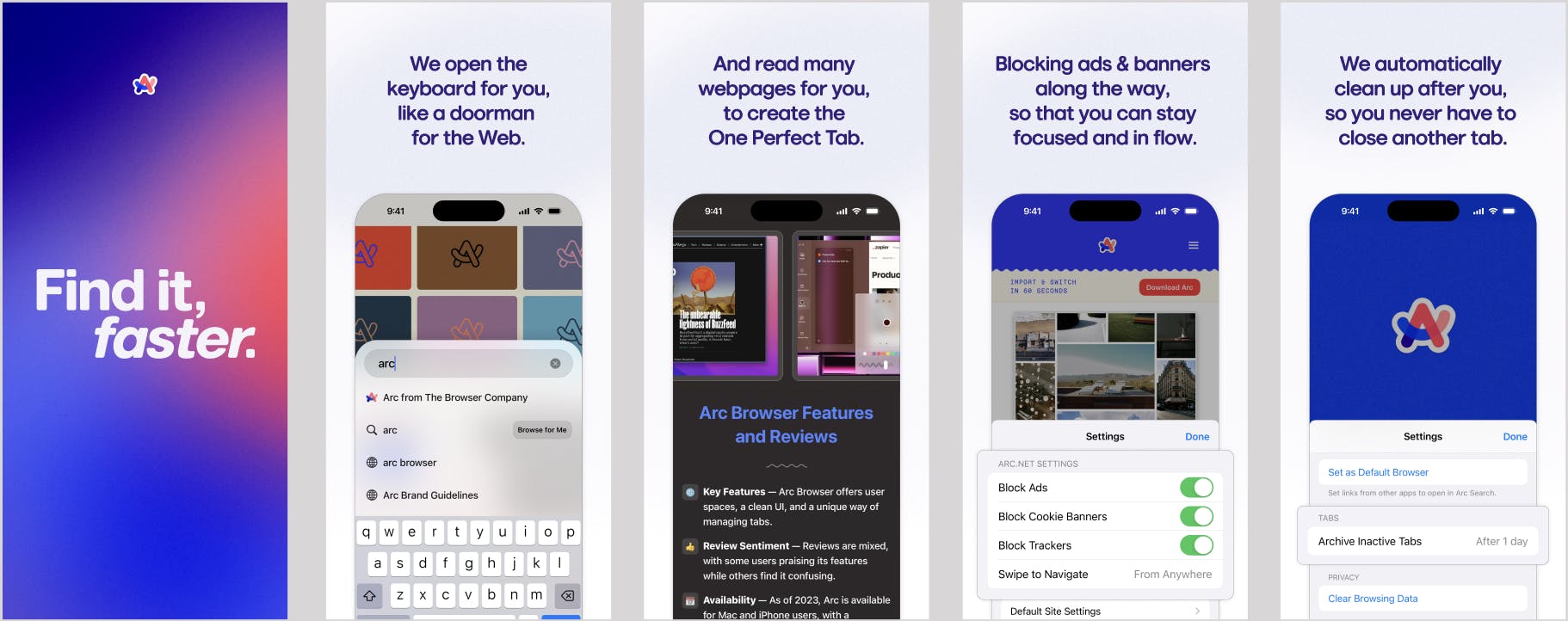
Source: Arc
Arc has a native iOS app called Arc Search, a mobile browser and search experience. With 4.8 stars and 2.4K ratings on The App Store as of May 2024, Arc’s mobile counterpart has found success, augmented by an AI-enabled browsing experience.
Fundamentally, The Browser Company believes that the browser, search engine, and AI chatbot could be one bundled offering. In addition to a minimized toolbar, auto-archiving of tabs, reader mode for focused reading, and an auto-opening keyboard, Arc Search’s primary focus is AI-powered search via an agent that browses on the users’ behalf. Rather than just displaying a list of sites, Browse For Me queries the sites directly and creates a custom webpage about them.
Privacy
Arc maintains a stringent privacy policy, stating that it is committed to building “a browser to make the internet better, not make money off your personal data”. The company claims that “we don’t know which websites you visit”, “we don’t see what you type into the browser”, and “we don’t sell your data to third parties.” Privacy concerns have long plagued Chrome, the dominant web browser. Arc breaks down each of its product features, the type of data collected, and where data is stored.
Integrations
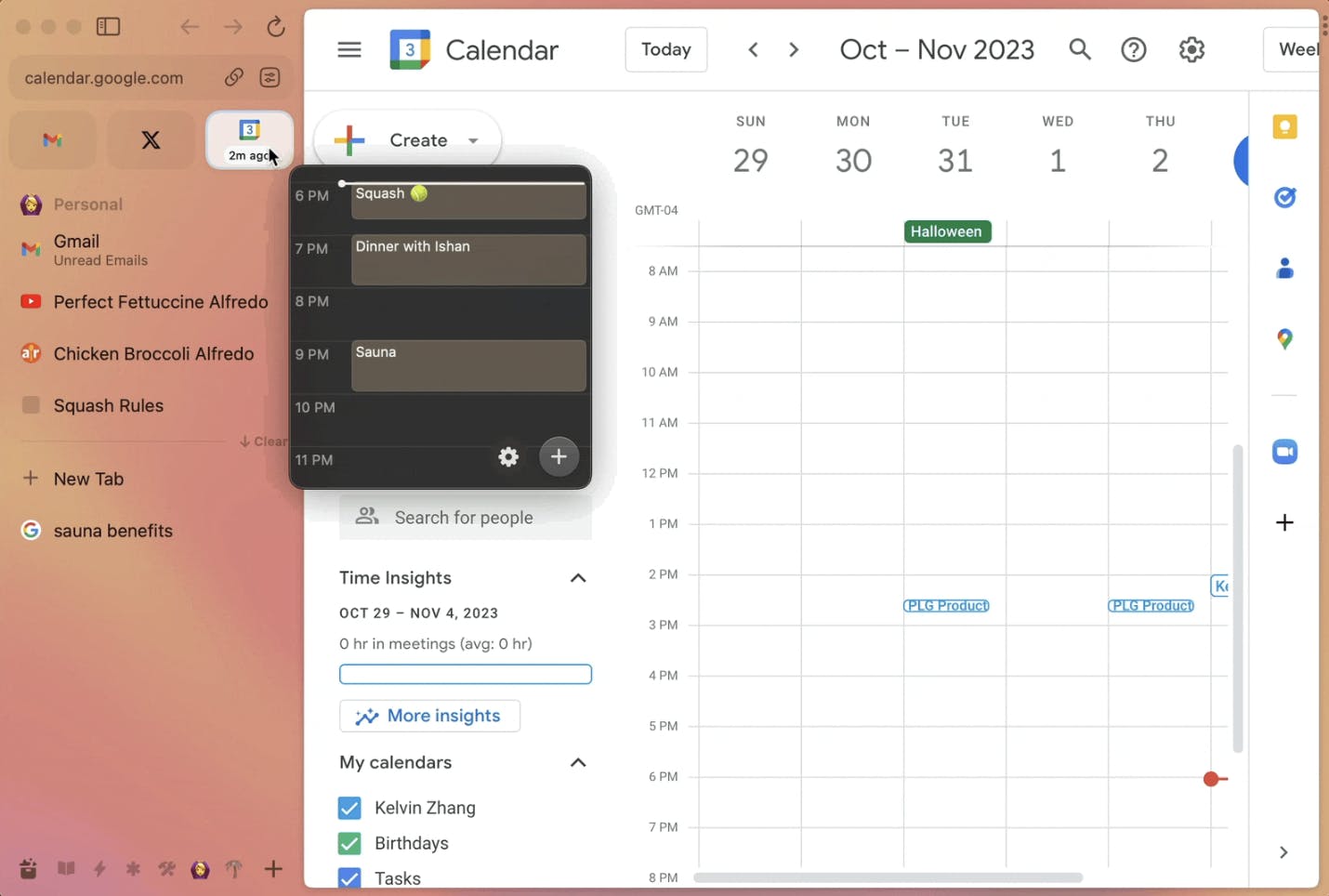
Source: Arc
Arc provides native integrations with highly-visited websites, and providing quick actions and previews without leaving a current tab. This includes quickly creating new Google Calendar events, opening recent Github Pull Requests, and controlling Spotify and YouTube audio via Mini-Player. Arc also partnered with Perplexity in January 2024, integrating Perplexity into the Arc Browser as a default search engine option.
Market
Customer
Arc is a consumer product, with most users being individual browser users. While it hasn't explicitly addressed a target persona or segment, Arc has a page and tools tailored towards developers, alongside specific integrations with sites commonly used by developers and designers. Arc users are often early adopters working in tech who are willing to experiment with a new browser experience.
According to Similarweb, as of May 2024, 22.3% of Arc users were from the United States, 8.7% were from India, and 6.7% were from China. No other countries accounted for 5% or more. Meanwhile, 63.8% of Arc users were between the ages of 18 and 34, and 65.1% of users were male.
Market Size
There were 5.4 billion internet users as of April 2024, the equivalent of 67.1% of the world’s population. This was expected to grow to 7.9 billion internet users by 2029. The global internet browser market was valued at $125 billion in 2020 and is expected to reach $326.1 billion by 2030, growing at a 17.3% CAGR.
Competition
Arc primarily competes with existing browsers. Despite nearly 200 publicly available browsers on the market, the top three (Chrome, Safari, and Edge) accounted for 88% of the market as of April 2024.
Google Chrome: Google released Chrome in 2008, and had a 65.4% share of the internet browser market as of April 2024, making it the most popular internet browser by far. Like Arc, Chrome was built on top of Google’s open-source Chromium library.
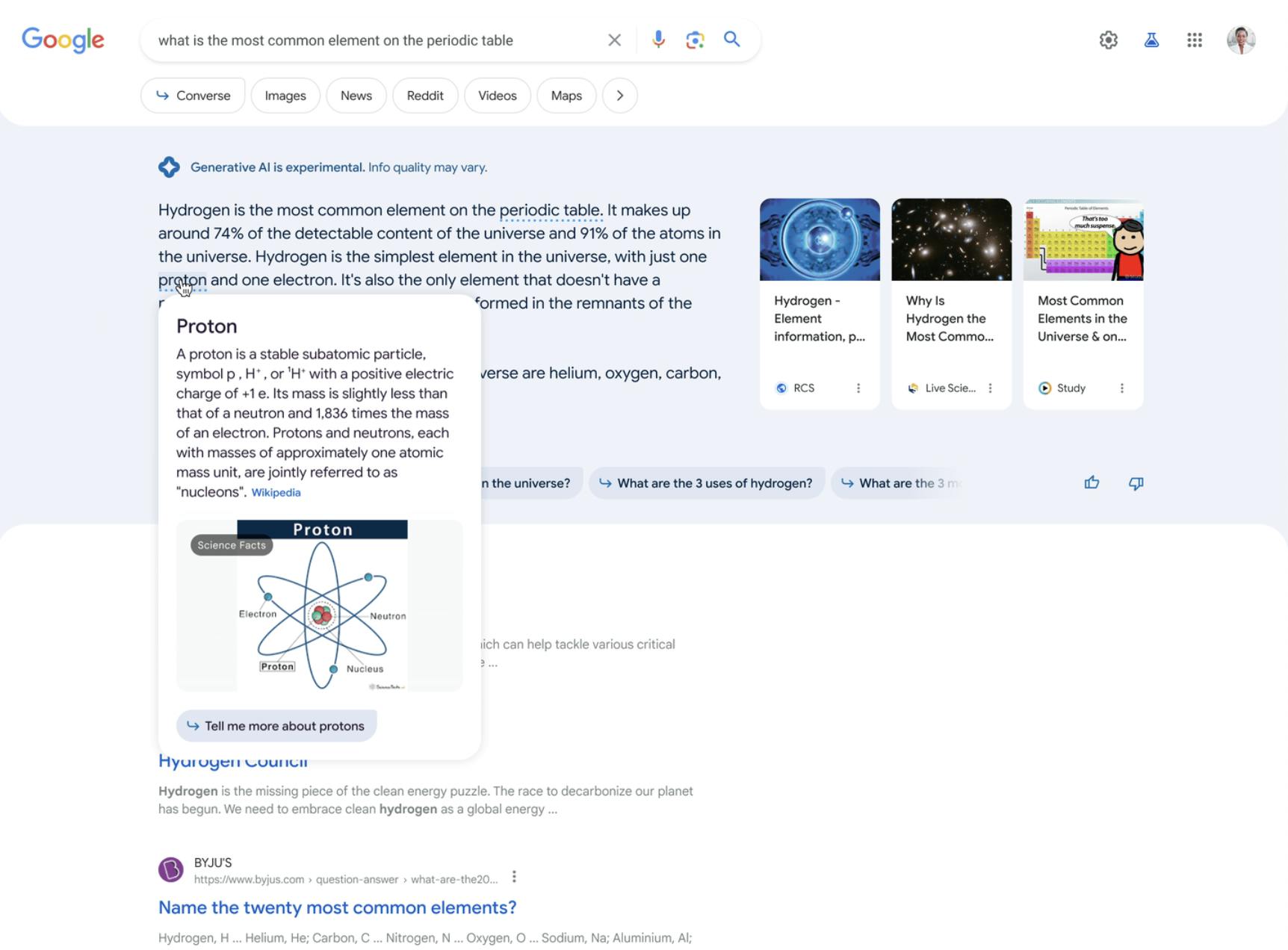
Source: Google
Google makes money off the user data gathered on Chrome, which is used to improve its Google Ads product. This helps third parties sponsor and promote their links to intended audiences. Chrome’s interface has remained largely the same as when it launched, though it’s continued to release features like Material You for site customization, performance improvements, and Gen-AI-powered features for search summaries.
Safari: Built and maintained by Apple, Safari was released in January 2003 as the default browser for Mac computers and later iPhones. Its main differentiator is its integration with Apple’s ecosystem and its focus on privacy with intelligent tracking, passkeys, and social widget tracking prevention. Unlike Chrome and Arc, Safari is built on Apple’s open-source browser engine WebKit, and does not have access to the Chrome Web Store.
Microsoft Edge: Edge is a web browser developed by Microsoft that was initially released in July 2015, replacing Internet Explorer 11 as the default browser for PCs. Edge was originally an HTML-based browser, but in 2020 a new version of Edge was released based on Chromium. Its market share as of April 2024 was 5.3% and has remained at that relatively low mark since 2018 when it was at 5% market share, despite the fact that the Windows operating system had 72.2% market share as of April 2024.
Brave: Brave was founded in 2015 by CEO Brendan Eich and CTO Brian Bondy, and released to the public in 2019. Brave is an open-source browser focused on privacy, blocking all attempts at advertising and cross-site tracking by default and advanced network privacy advancements. Eich stated that:
“Today’s Internet is broken, and users suffer the most. They are being tracked, tagged, and exploited; this violates privacy and slows down page loads, drains batteries, and makes for a miserable experience.”
Brave has raised $42.3 million in total funding as of May 2024. As of March 2024, Brave has recorded 73 million monthly active users. Brave was built as a direct competitor to Chrome, citing its lack of privacy as a major deterrent for individuals.
Sigma OS: Sigma OS was founded in 2021 by Mayad Ghassemibouyaghchi (CEO), Ali Attar (CPO), and Saurav Mitra (CTO). Built as a modern replacement for traditional browsers, SigmaOS revolves around workspaces, each with specific tabs and themes available. Sigma OS resembles Arc, allowing for a split view, sharing workspaces with others, and a sidebar to hide tabs. Sigma raised $4 million in 2022, led by LocalGlobe. It has attempted to monetize with a paid plan for teams.
Business Model
As of May 2024, Arc does not charge for usage. Suggested avenues for Arc to generate revenue include charging users on a subscription model, similar to how Superhuman charges users of its email app, even though there are free email products on the market that it competes with. It could also charge search engines or AI search tools like Perplexity (which it partnered with in January 2024) to be its default search engine. It could also adopt a premium model, or try to move into a B2B model via product-led growth.
Miller has publicly addressed concerns around monetization, stating that the focus of the company is on product refinement before committing to a monetization model.
Traction
Arc has not shared usage publicly, though Miller shared some growth charts while Arc was on a public waitlist in 2022. In that time, signups grew nearly 10x.

Source: Twitter
Arc has established growth loops to achieve traction, including an extensive waitlist program to garner interest, a dedicated membership team for owning customer relationships, and the establishment of a consistent, personal product-marketing motion.
Valuation
In March 2024, The Browser Company raised a $50 million Series B at a $550 million valuation. The round, led by Pace Capital, brought the company’s total funding to $68 million, with past notable investors in the company including Jeff Weiner, Akshay Kothari, Dylan Field, Jason Warner, and Ev Williams.
Key Opportunities
Stagnant Browser Market
Although Chrome maintains leadership in the global browser market, it hasn’t made major updates to the core UI or functionality due to user familiarity with the product as it is and its longstanding dominance in the browser market. Arc, by contrast, has rebuilt the browser from the ground up with the ability to closely integrate AI into its existing features. Chrome doesn’t have the same freedom to test new products and UIs, which could create pushback from legacy users. Arc, by contrast, has built its browser with user input from the start, publicly fine-tuning and simplifying its product to address user needs.
Evolving Search Market
Similar to Chrome, Google Search has long dominated the search engine market, maintaining over 90% market share between June 2015 and March 2024. The launch of ChatGPT in November 2022, however, caused people to question whether search engines would retain their place in the internet ecosystem going forward, with the budding alternative of AI-powered chat tools such as ChatGPT and Perplexity. Arc’s native integration with Perplexity could bolster Arc’s appeal if Perplexity gains traction, and its focus on AI-enabled mobile search could allow a wedge into a mobile market that is also dominated by Chrome and Safari.
Key Risks
Unproven Monetization
The Browser Company has stated that it plans to “make a lot of money”, but only in a way that aligns its incentives with users. However, the monetization strategy it will ultimately embrace has not yet been clearly defined. Monetization in the browser market generally can be difficult due to the open-source nature of the internet and general feature homogeneity across browsers. Arc must find a way to leverage its product differentiation and engaged customer base to drive revenue.
Moving Beyond Early Adopters
Arc ships quickly and has found initial success with early users. It focuses on one metric as its north star — the number of users that use Arc at least five days a week — that accounts for engagement, retention, and growth. Arc has garnered growing attention online through influencer reviews and its CEO’s online presence, but its ultimate success will depend on crossing the chasm from appealing to tech enthusiasts and early adopters to achieving mainstream appeal.
Summary
The internet reached 5.4 billion users globally in April 2024, which accounts for 67.1% of the world’s population. The dominant browsers as of April 2024 were Chrome, Safari, and Microsoft Edge. Despite over thirty years having passed since the first browser's launch, browser interaction and design have seen limited evolution. Arc, launched in 2022 by The Browser Company, aims to redefine the browser experience, focusing on simplicity, customization, and AI integration. It has garnered attention for its unique features such as Spaces, Profiles, and Boosts, alongside a commitment to privacy. Arc also offers native integrations with popular websites and targets tech-savvy users, particularly developers and designers. While Arc does not charge for usage, potential revenue models include subscriptions, partnerships with search engines, or a premium model.

